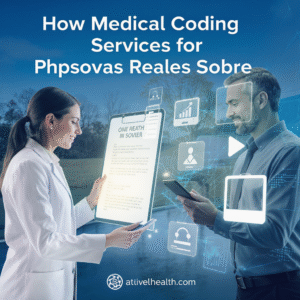The Complete Guide to Diagnostic & Interventional Radiology Coding
Radiology Coding
Radiology Coding
Medical coding in radiology represents one of the most complex and rapidly evolving areas of healthcare billing. With technological advances continuously expanding diagnostic capabilities and interventional procedures becoming increasingly sophisticated, understanding the nuances of radiology coding has become essential for healthcare providers, billing specialists, and practice administrators.

Understanding the Foundation of Radiology Coding
Radiology coding operates within a framework established by the American Medical Association through the Current Procedural Terminology (CPT) code system, supplemented by Healthcare Common Procedure Coding System (HCPCS) codes for specific equipment and supplies. The Centers for Medicare & Medicaid Services (CMS) provides additional guidance through the Medicare Physician Fee Schedule and National Coverage Determinations.
The complexity of radiology coding stems from several factors. First, radiological procedures often involve multiple components that may require separate coding, including the technical component (equipment, technologist time, and supplies) and the professional component (physician interpretation and report). Second, many procedures involve contrast materials, which require additional coding considerations. Third, the distinction between diagnostic and interventional procedures can significantly impact coding and reimbursement.
Diagnostic Radiology Coding Fundamentals
Diagnostic radiology encompasses imaging studies designed to visualize internal structures and identify pathological conditions. The coding structure for diagnostic radiology follows specific patterns that reflect the complexity and resource intensity of different procedures.
Plain film radiography, the most basic form of diagnostic imaging, uses codes ranging from 70010 to 76499. These codes are generally straightforward, with variations based on the anatomical area examined and the number of views obtained. For example, a chest X-ray with two views uses code 71020, while a single view uses 71010. The coding distinction reflects the additional time and resources required for multiple projections.
Cross-sectional imaging presents more complex coding scenarios. Computed tomography (CT) codes range from 70450 to 70498 for head and neck studies, 71250 to 71275 for chest studies, and continue through various anatomical regions. The key coding consideration for CT studies is whether contrast material is administered. Non-contrast studies use the base codes, while studies with contrast require different codes that reflect the additional complexity and risk associated with contrast administration.

Magnetic resonance imaging (MRI) follows similar principles but with its own code range from 70540 to 73225. MRI coding must account for contrast administration, with gadolinium-based agents being the standard. The coding also reflects whether the study is performed with or without contrast, or with both non-contrast and contrast phases.
Ultrasound imaging uses codes from 76506 to 76999, with specific attention to whether the study is limited or complete. This distinction significantly impacts reimbursement and requires clear documentation of the anatomical areas examined and the clinical indications addressed.
Interventional Radiology Coding Complexities
Interventional radiology represents a specialized field where diagnostic imaging guides therapeutic procedures. These procedures typically involve more complex coding scenarios due to their multi-step nature and the integration of diagnostic and therapeutic components.
Vascular interventional procedures form a significant portion of interventional radiology coding. These procedures often involve multiple steps, including diagnostic angiography, therapeutic intervention, and post-procedure imaging. The coding must accurately reflect each component while avoiding inappropriate bundling or unbundling of services.
For example, a lower extremity angioplasty procedure might involve several coding components: selective catheter placement, diagnostic angiography, balloon angioplasty, and possible stent placement. Each component has specific coding requirements, and the coder must understand which services can be reported separately and which are considered bundled services.
Non-vascular interventional procedures, such as image-guided biopsies, drainage procedures, and ablation therapies, require careful attention to imaging guidance codes. The coding must reflect both the procedure itself and the imaging modality used for guidance, whether fluoroscopy, CT, ultrasound, or MRI.
Professional and Technical Component Considerations
One of the most critical aspects of radiology coding is understanding the distinction between professional and technical components. This separation, known as the PC/TC split, allows for separate billing when services are provided in different settings or by different providers.
The professional component includes the physician’s interpretation of the imaging study and the written report. This component can be billed separately when the physician does not own the equipment used for the examination. The technical component encompasses the equipment, technologist services, supplies, and overhead costs associated with performing the procedure.
Many radiology codes have built-in PC/TC splits, indicated by specific modifiers. Modifier 26 identifies the professional component only, while modifier TC identifies the technical component only. When both components are provided by the same entity, the global code (without modifiers) is typically used.
Understanding when to apply these modifiers is crucial for proper reimbursement. Hospital-based radiologists often bill only the professional component, while the hospital bills the technical component. In contrast, private practice radiologists who own their equipment typically bill the global service.
Contrast Material and Supply Coding
Contrast agents play a crucial role in many radiological procedures, and their coding requires specific attention. The administration of contrast material is typically included in the imaging procedure code, but the contrast material itself may require separate coding in certain circumstances.
For most diagnostic imaging procedures, contrast administration is considered integral to the procedure and is not separately billable. However, in certain interventional procedures or when specific high-cost contrast agents are used, separate billing may be appropriate.
HCPCS codes are used for contrast materials and other supplies. These codes range from A4000 to A9999 and include various contrast agents, radiopharmaceuticals, and medical supplies. The appropriate use of these codes requires understanding of the specific circumstances under which separate billing is permitted.
The coding of contrast reactions also requires attention. While mild reactions are typically considered part of the procedure, severe reactions requiring additional physician intervention may warrant separate evaluation and management coding.

Modifier Usage in Radiology Coding
Modifiers play a crucial role in radiology coding, providing additional information about how services were performed and ensuring appropriate reimbursement. Beyond the PC/TC modifiers, several other modifiers are commonly used in radiology.
Modifier 59 (Distinct Procedural Service) is frequently used in radiology to indicate that procedures performed on the same day are distinct and separate services. This modifier helps prevent inappropriate bundling of services that should be reimbursed separately.
Bilateral procedure modifiers (50, LT, RT) are essential when procedures are performed on both sides of the body or when laterality is important for proper coding. The use of these modifiers can significantly impact reimbursement, particularly for procedures where bilateral services are valued differently than two unilateral services.
Multiple procedure modifiers help ensure appropriate reimbursement when multiple procedures are performed during the same session. Understanding the hierarchy of multiple procedures and the application of reduction rules is essential for maximizing legitimate reimbursement.
Documentation Requirements and Compliance
Proper documentation forms the foundation of accurate radiology coding and compliance with regulatory requirements. The radiologist’s report must contain sufficient detail to support the codes submitted for reimbursement and must demonstrate medical necessity for the procedures performed.
Key documentation elements include clear identification of the procedure performed, the anatomical areas examined, the use of contrast material, any complications encountered, and the clinical findings. The report should also document the medical necessity for the procedure, typically through reference to appropriate signs, symptoms, or clinical indications.
Compliance with the Physician Quality Reporting System (PQRS) and other quality reporting initiatives may require additional documentation elements. These programs often require specific data points to be recorded and reported, adding complexity to the documentation requirements.
The importance of accurate and complete documentation cannot be overstated, particularly in light of increasing scrutiny from payers and regulatory agencies. Post-payment audits frequently focus on documentation adequacy, making thorough and accurate reporting essential for long-term financial stability.
Emerging Trends and Future Considerations
The field of radiology coding continues to evolve with technological advances and changes in healthcare delivery models. Artificial intelligence and machine learning technologies are beginning to impact radiology practice, potentially affecting coding and reimbursement structures in the future.
Telemedicine and remote interpretation services have grown significantly, particularly following the COVID-19 pandemic. These service delivery models may require modifications to traditional coding approaches and raise questions about professional component billing in remote settings.
Value-based care initiatives are increasingly influencing radiology reimbursement, with greater emphasis on outcomes and efficiency rather than volume-based payments. This shift may require radiologists and coding specialists to adapt their approaches to documentation and coding to demonstrate value and quality.
The ongoing development of new imaging technologies and interventional techniques will undoubtedly require updates to existing coding structures. Staying current with these changes and understanding their implications for coding and reimbursement will be essential for success in radiology practice management.
Best Practices for Radiology Coding Success
Successful radiology coding requires a systematic approach that emphasizes accuracy, compliance, and optimization of legitimate reimbursement. Regular training and education for coding staff is essential, given the complexity and frequent changes in radiology coding requirements.
Implementing robust quality assurance processes helps ensure coding accuracy and identifies opportunities for improvement. Regular audits of coding practices, both internal and external, can help identify potential compliance issues before they become significant problems.

Maintaining current knowledge of payer policies and coverage determinations is crucial for avoiding denials and ensuring appropriate reimbursement. Different payers may have varying requirements for the same procedures, requiring careful attention to specific policy details.
Finally, fostering strong communication between radiologists, coding staff, and billing personnel helps ensure that all parties understand the coding implications of clinical decisions and documentation practices. This collaboration is essential for optimizing both patient care and financial performance in radiology practice.



